Trusty Queensland CWA scone recipe hits the sweet spot
By Janine Lucas | 10 November 2023
What is Queensland’s classic CWA scone recipe?
With all things light and fluffy on our minds for the release of State Library of Queensland’s Cake podcast, we sifted through our heritage collections to find the answer.
The collections preserve community recipe books compiled by the clever country cooks of Queensland Country Women’s Association (QCWA) branches everywhere from Brigalow to Bundaberg, Drillham, Emu Vale, Gregory, Nambour, Nelia, Samford, The Summit and Winton.
Sylvia Raper, one of the QCWA’s foremost scone experts, uses a tried-and-true recipe that has evolved and endured over almost a century.
Her go-to scone recipe is from the Bundaberg QCWA Cookery Book, which was first published in 1928 and is still in circulation today after several revisions and many reprints.
‘I like this recipe because it makes a really nice, light scone, and it makes a good amount,’ Sylvia says. ‘It's a little bit like a never-fail recipe.’
From CWA scones to the iconic cakes of your childhood, summer listening just got yummier with Cake the podcast!
CWA scone recipe
Courtesy of the QCWA, from Bundaberg branch Cookery Book
3 cups self-raising flour
2 tablespoons butter
Pinch salt
1 tablespoon icing sugar
1½ cups milk
-
Melt butter in ½ cup milk.
-
Pour that into 1 cup milk from the refrigerator.
-
Sift flour, salt and icing sugar.
-
Make a well in the centre and pour in milk.
-
Mix with a fork to a dough that is not too dry.
-
Put on a floured board and press to 2 cm thickness.
-
Cut quickly with a round cutter and place close together on a greased tray.
-
Bake at 250°C*.
*Sylvia bakes her scones for 7–8 minutes before quickly turning around the tray and baking another 7–8 minutes.
(Instead of fresh milk use 3 tablespoons powdered milk sieved with flour. Mix with water.)
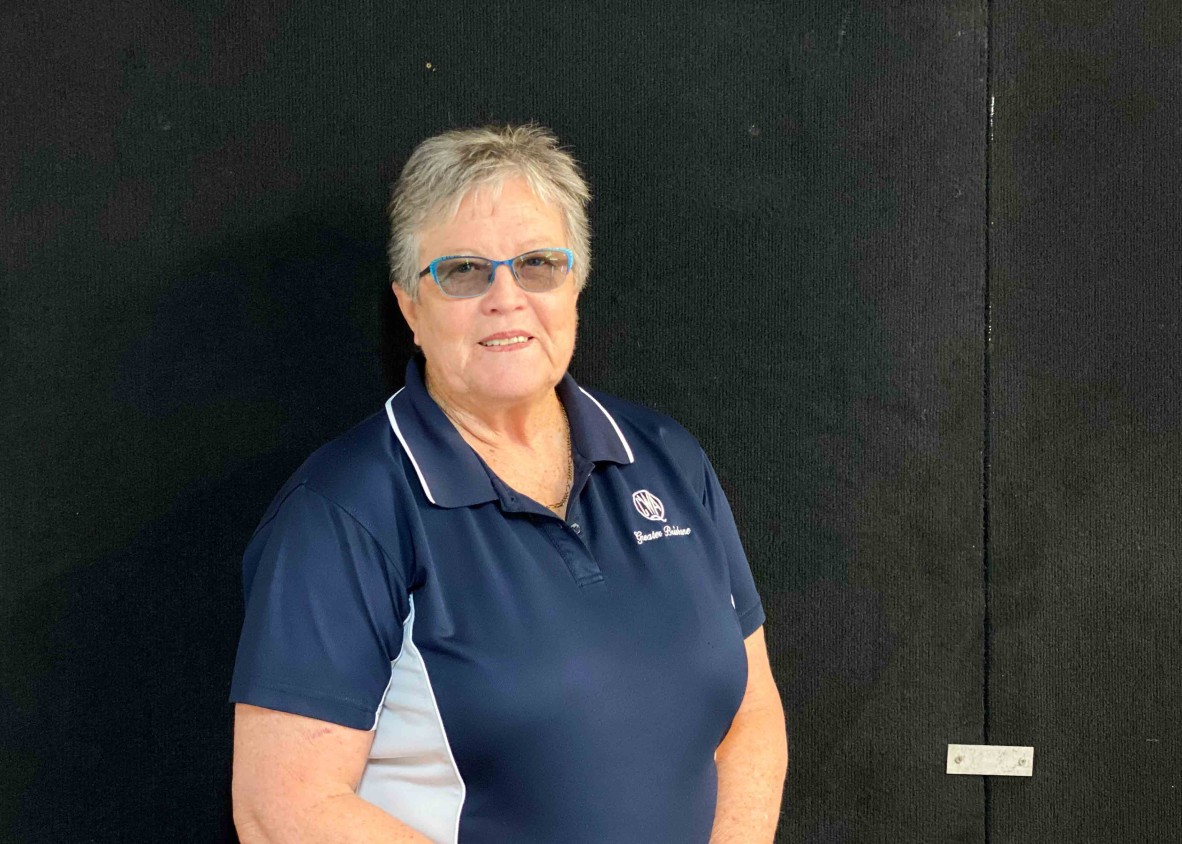
Sylvia Raper, one of the QCWA's foremost scone experts, has turned out thousands of scones at The Ekka during her time running the QCWA Eats & Treats Cafe.
Cooking memories
For 13 years, Sylvia coordinated the team behind the QCWA Eats & Treats Café at the Ekka each August. She handed over the reins in 2023 but was still busy behind the scenes, helping to turn out thousands of scones and other home-cooked goodies for the hungry hordes of showgoers.
Sylvia, a longtime member of the Pine Rivers branch catering group, has been in the CWA since she was 10, along with sister Lois. Their mum, Dulcie, was a foundation member of the Elgin Vale QCWA branch in 1963.
Sylvia’s daughter, granddaughter and baby great-granddaughter are all CWA members.
‘I remember Mum cooking a lot when we were children. We lived a long way from town, so shopping was a monthly event,’ Sylvia says.
‘She had a hand-written recipe book in which she kept her many recipes. When Mum passed away, my sister Elaine saved the recipe book. I transcribed it onto the computer and gave my 6 siblings a copy of the recipes she used across the years.
‘I have all my sisters in QCWA. I think it honours our Mum in some way. She would make puftaloons, which were scones cooked in oil or fat in a frying pan. They were so lovely with butter and syrup. Today, I would liken them to a donut in taste and appearance.’
While so many people have devoured Sylvia’s classic scones over the years, Sylvia isn’t one of them. Both she and sister Lois have coeliac disease, a condition where the immune system attacks the body’s tissues when gluten is consumed. ‘We now know our mum Dulcie was coeliac also, as are many of our extended families,’ she says.
Sylvia has to wear gloves when she handles flour as even the tiniest amount of gluten can make coeliacs ill.
Luckily though, she does an excellent gluten-free pumpkin scone, for which she uses baking powder to counteract the heaviness of the pumpkin:
-
Combine 1 cup pumpkin, 1 cup cream, ½ cup sugar and 1 egg. Add to 2¼ cup gluten-free self-raising flour and 1 teaspoon baking powder.
-
Add dates, cranberries or sultanas if desired.
-
Pat out and bake at 250C for 17 minutes.
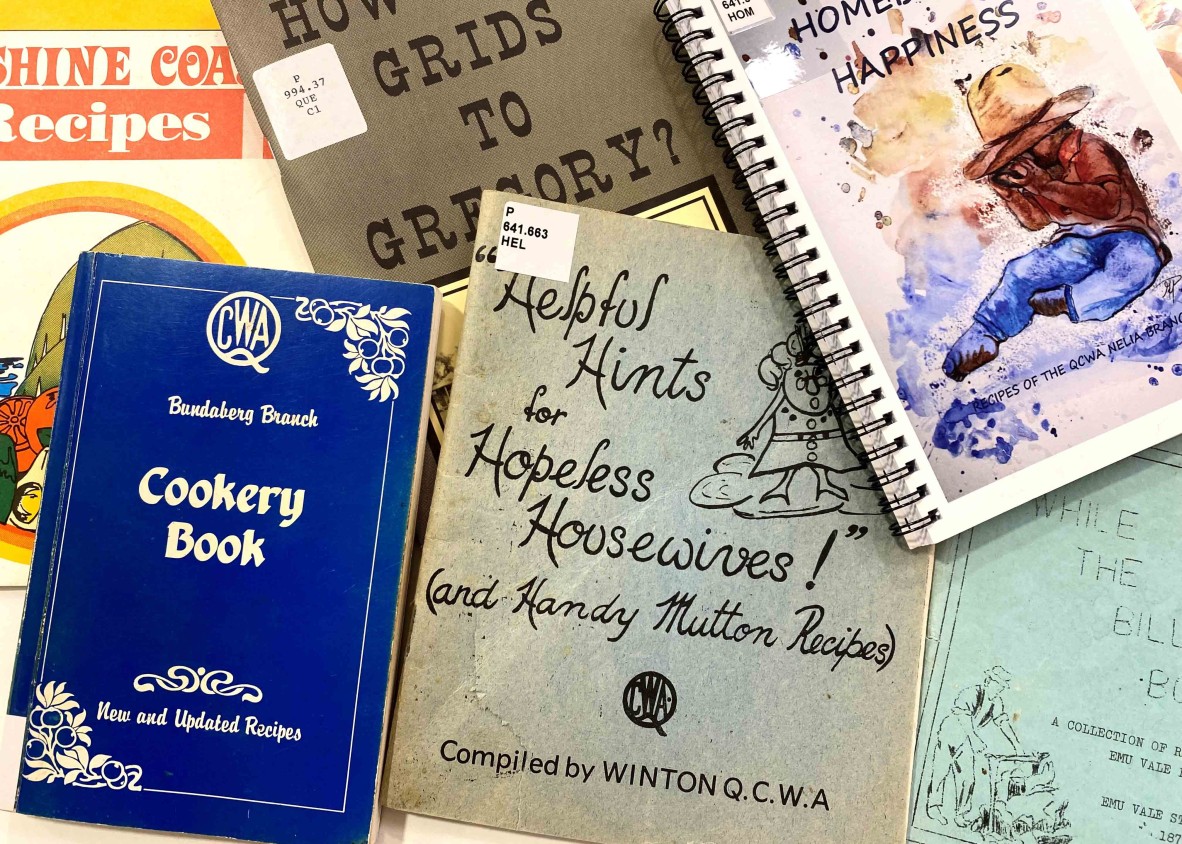
Some of the Queensland Country Women's Association cookbooks from all over the state preserved in State Library collections at John Oxley Library.
Sylvia’s tips for top scones
The beauty of the scone is its simplicity and accessibility for cooks of all (or no) abilities. But a light touch and a quick pace will get better results. Here are Sylvia’s ingredients for the perfect scone.
Mixing
Sylvia veers slightly off recipe in the mixing stage. She doesn’t melt the butter. Instead, she rubs it through the flour, salt and sugar mixture. 'Rub the butter through quickly – try not to get your mixture too warm. The colder you can keep the mixture, the better. Don’t spend a lot of time stirring.' Sylvia uses a whisk rather than a sifter to sift the flour. 'A very good cook told me to use a whisk. It aerates the flour and it’s easier than sifting.'
Handling
'Turn the mixture onto a floured board and turn right side over, left, front, back and turn over. Don’t work the dough; be gentle. Put the leftover mixture together only once and gently press to the desired thickness – never roll it.'
Cooking
'Get your scones into the oven quickly or the flour will start to prove beforehand. Know your oven. With scones, I put them in for 7 to 8 minutes, turn the baking tray around quickly and give them another 7 to 8 minutes.'
Cooling
'I like to take my scones off the tray to cool, which is where my sister and I differ. I take a clean tea towel and wrap them up like a little baby to keep them nice and moist while they cool.'
Substitutions
Sylvia uses caster sugar in place of icing sugar. And she says buttermilk will help keep the scones fresh for longer. Make buttermilk by adding a teaspoon or two of vinegar to milk.
Jam or cream first?
'I put the jam on first. You will always have people saying that’s not right. It goes back to the UK where they differ pending what village or shire you come from. I do know a lot of people who won't put jam and cream on them; they enjoy them with butter.'
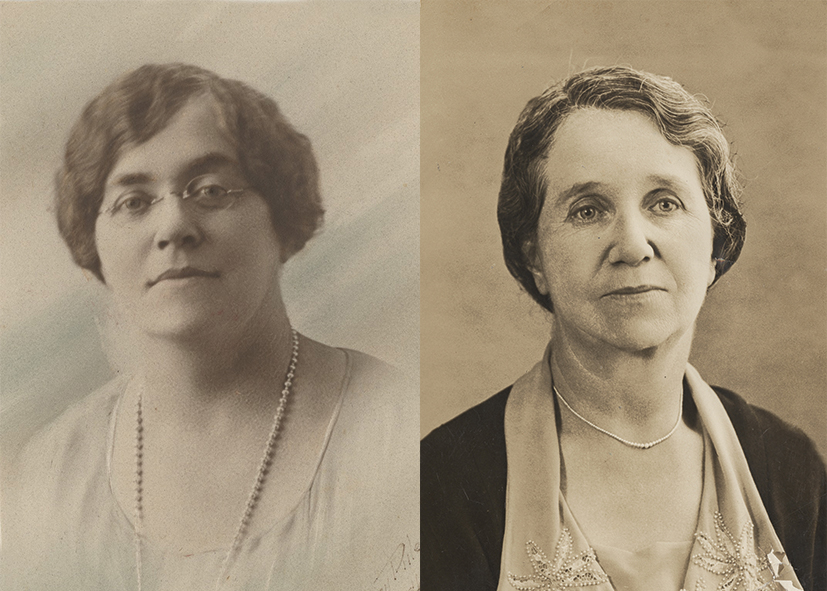
Jeanne Gibson was president of the Bundaberg branch of the Queensland branch of the Country Women's Association in 1928 when she decided to print a cookery book of reliable recipes. Her cousin by marriage, Mary Gibson, was appointed convener of the Cookery Book Committee and the book that was produced is still popular today after more than 20 editions and several revisions. John Oxley Library, State Library of Queensland. Images 27354-0001-0001 and 27354-0001-0002.
Who wrote the QCWA scone recipe?
The Bundaberg branch’s trusty little blue recipe book is on sale at the QCWA’s Ekka café each year.
It’s a book steeped in family tradition. Mary Gibson and her cousin by marriage Jeanne Gibson, members of a prominent Bundaberg sugar growing and milling family, were the women who led its creation.
According to State Library records, Jeanne was president of the Bundaberg branch of the QCWA in 1928, when it was decided to print a book of reliable recipes. Mary was appointed convener of the Cookery Book Committee, and the book they produced was deemed a resounding success.
Editions from 1931, 1940, 1982 and 2003 are in State Library’s collections, as well as original and digitised portraits of Mary and Jeanne Gibson.
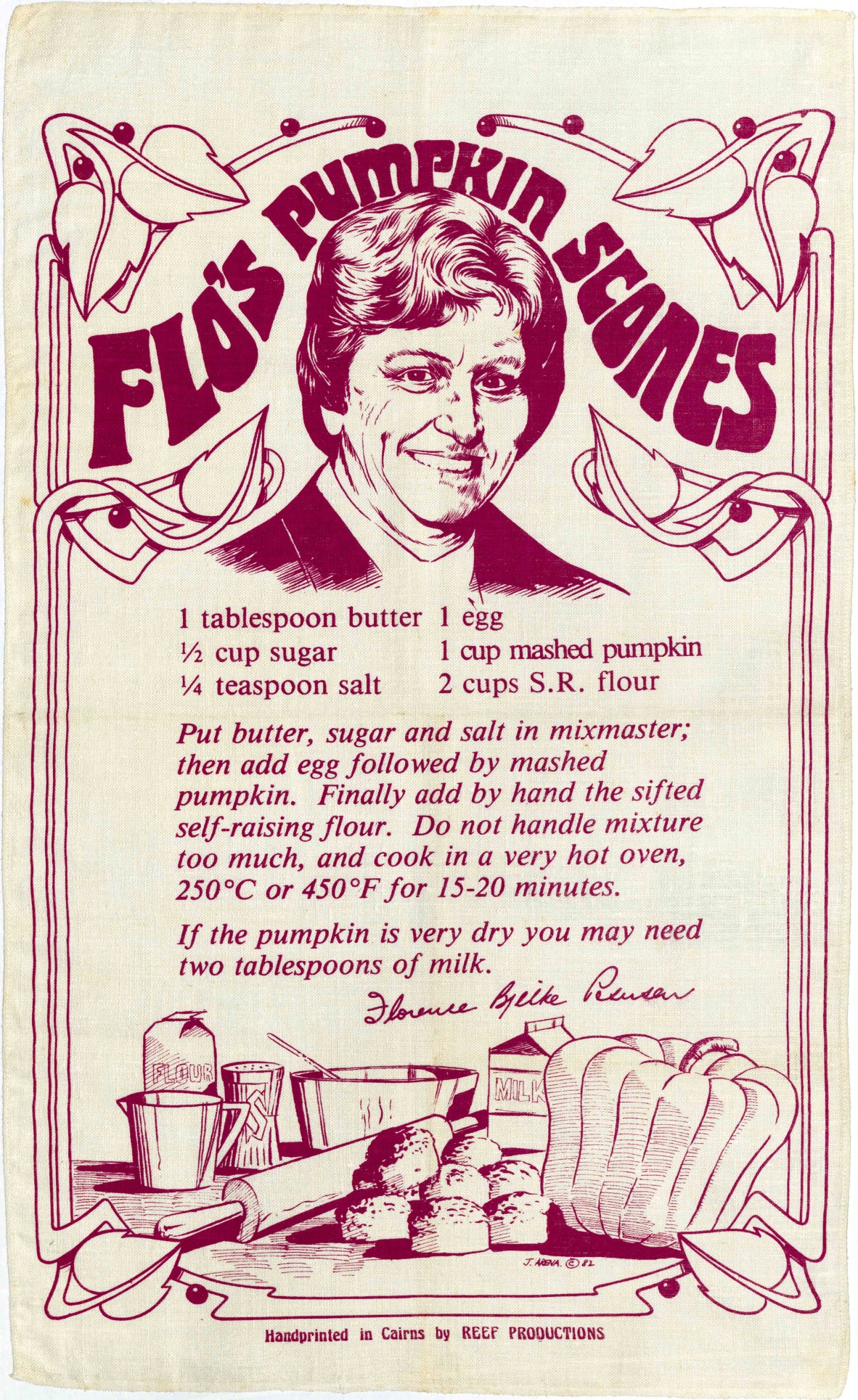
Tea towel: Flo’s Pumpkin Scones: Glenn R. Cooke Souvenir Textiles Collection : item no. 356. (2022). John Oxley Library, State Library of Queensland.
The quintessential pumpkin scone
The most famous variation on the classic scone is pumpkin, made famous by Lady Florence Bjelke-Petersen, whose husband, Sir Joh Bjelke-Peterson, was premier of Queensland from 1968 to 1987.
Lady Flo, a National Party Senator for Queensland from 1981 to 1993, wrote several cookbooks. Her signature pumpkin scone recipe is reproduced on 2 tea towels in the Glenn R. Cooke Souvenir Textiles Collection at State Library. A selection of the 1500 linen tea towels in the collection was exhibited in Queensland to a T in 2022.
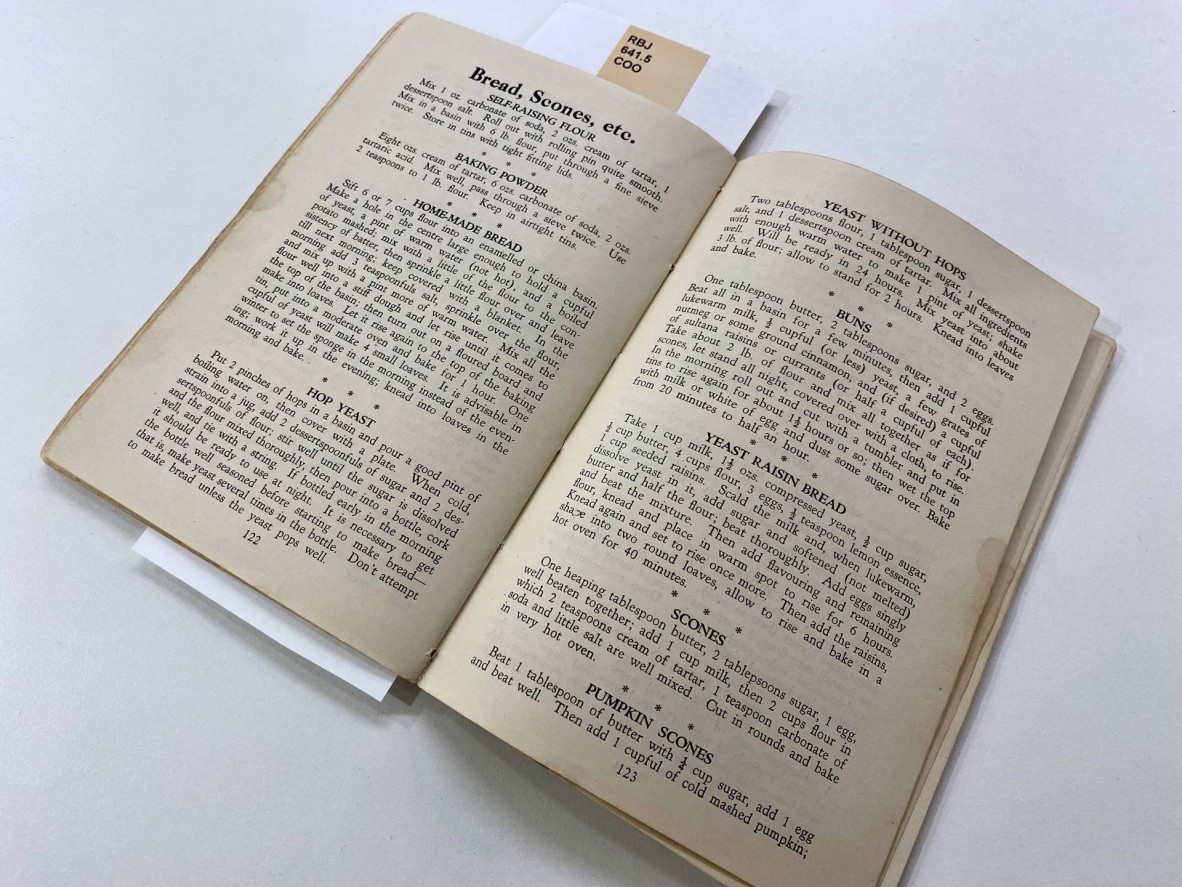
Cookery book / Bundaberg Branch QCWA (2nd ed.), ca 1931, Queensland Country Women’s Association. John Oxley Library, State Library of Queensland.
Scones with a twist ... or not
The QCWA recipe books in State Library’s collections have all sorts of variations on the plain scone, including wholemeal date, Irish potato, Canadian, cream, spicy fruit, and currant. Nambour branch’s QCWA Sunshine Coast Recipes goes for a tropical twist with recipes for banana scones and papaw scones.
For a savoury alternative, Sylvia bakes cheese scones (substitute a cup of tasty cheese for the icing sugar, top the scones with a little extra cheese, then brush on milk or water). Another popular option is lemonade scones (cup of lemonade, cup of cream and 3 cups self-raising flour).
In pre-refrigeration Queensland and with home cooks needing to make a little go a long way, the scone and its cousins hit the spot. But one of the best things about the humble scone is its universal appeal.
'You would go a long way to find people who don’t like a scone with either butter or jam and cream,' Sylvia says.
'Growing up, we had cream, but it was what we skimmed off the top of the milk and it never whipped up well. We only ever had homemade butter on our scones.
'They are more of a hearty morning tea. The sweetness is not overdone, and you can put a bit of jam on to make it a little bit sweeter. A scone is a very well received morning tea.'
Indulge in Cake the podcast with award-winning host Kaitlyn Sawrey.
On our blog
Five forgotten recipe books to tempt and delight
A vintage pineapple upside down cake recipe
Comments
Your email address will not be published.
We welcome relevant, respectful comments.